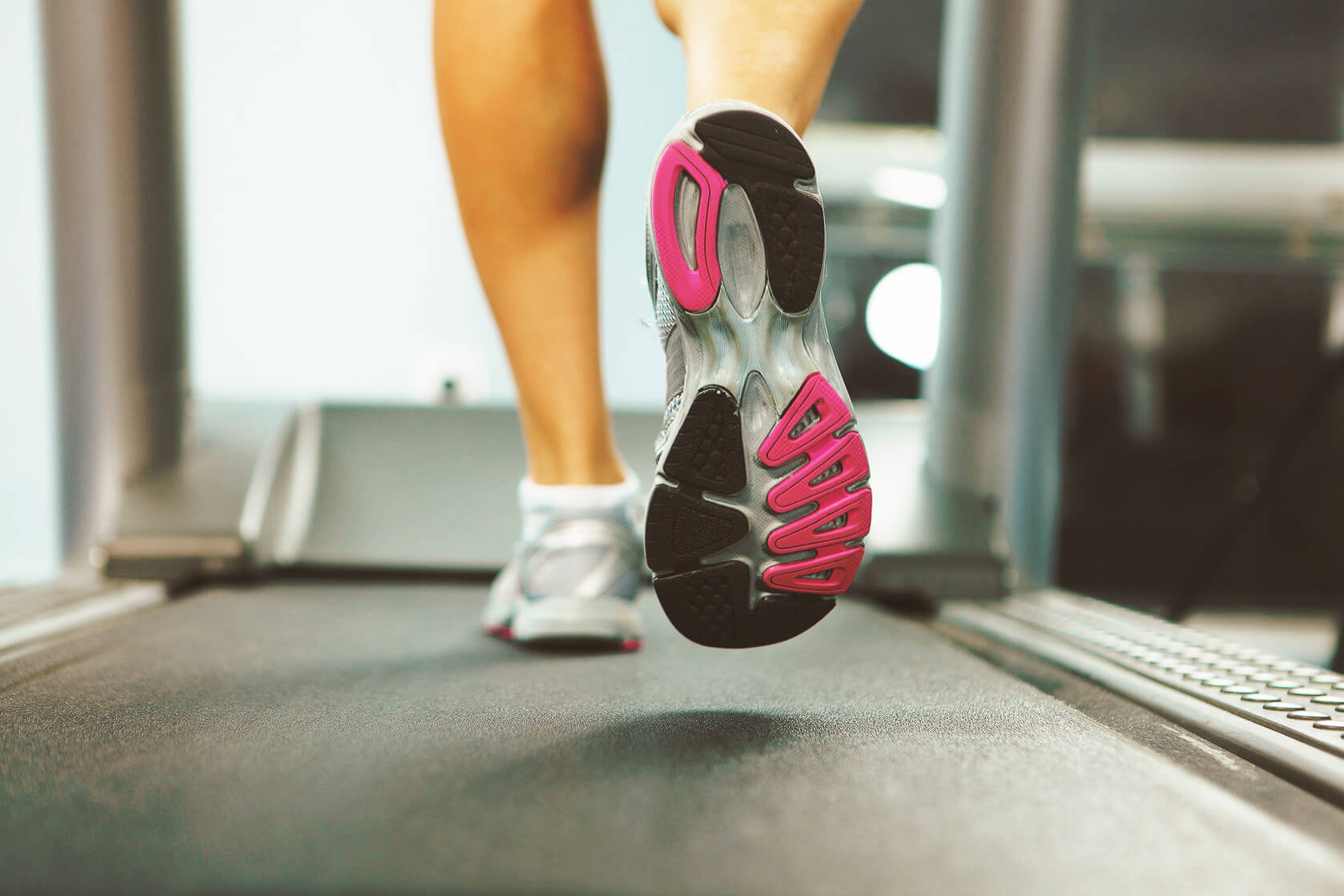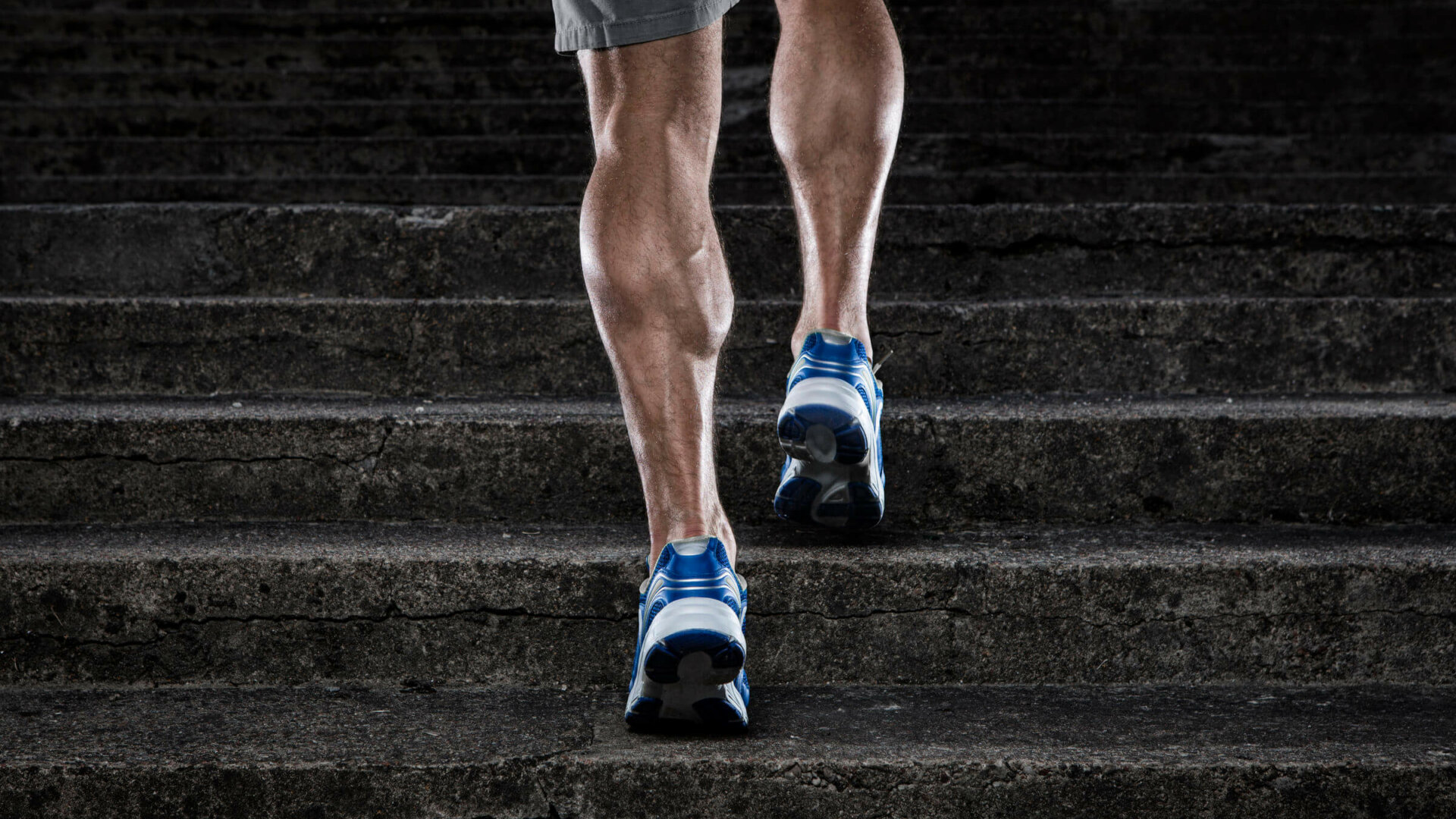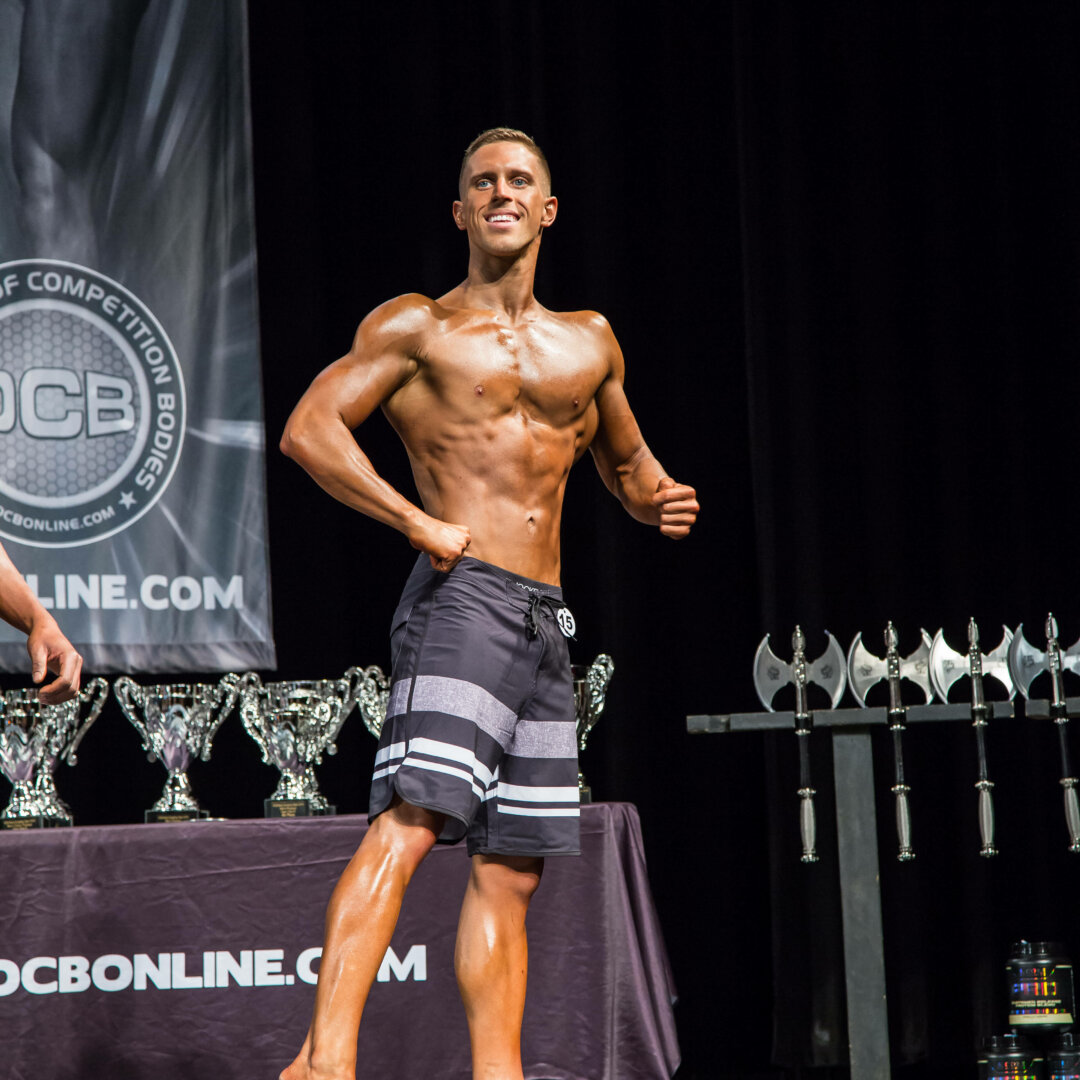I’ve been fortunate to team up with BioLayne.com before in discussing cardio and how it should play into the overall equation for fat loss. We’ve made some great headway in dispelling the many myths surrounding aerobic exercise and the drawbacks to overlying on it for long-term physique development. As much as I like to encourage people to focus on nutritional adjustments for achieving fat loss, and strength training for retaining muscle tissue during that fat loss phase, there almost always comes a point where at least some cardio is required to achieve higher level conditioning.
Of all the online clients I’ve helped prepare for the physique stage, be it bikini, men’s physique or bodybuilding, an extremely small number have reached true stage conditioning without at least some formal cardio in their plans. Many of which end up requiring a fair amount of formal cardio in addition to continued nutritional adjustments before being fully ready.
As that need for additional cardio rises in athletes, so too does the importance in the type and methods we use in approaching that cardio to best maximize our often-limited time, and especially limited energy levels as we work deeper and deeper into a contest prep diet. Below are some realizations I’ve found both personally during my own preps, through continued review into the research literature, and my own coaching experience that can help you navigate your prep cardio as effectively as possible while you fine tune your physique for the stage.

Multi-Taskability
For the non-competitive person simply looking to maintain a healthy weight and body composition, the general guidelines for aerobic activity can be pretty manageable to achieve each week; even enjoyable. The American Council of Sports Medicine (ACSM) recommends just 60-150 min per week of aerobic activity and minimum of two strength training sessions per week to maintain general health. [1] Guidelines most of you reading are clearly meeting or exceeding as we pursue higher levels of fitness and physique development than merely general health. Getting in aerobic activity during the week to maintain general heart health, or during casual dieting phases can be as simple as playing some pick up basketball games, going on hikes with friends or family, or other recreational activity that can be as entertaining as it is healthy.
Contest prep cardio is however, a different story. As athletes that are focused on controlling variables and eking the most progress out of efforts, performing more formal modes of aerobic activity lend themselves to more predictable and adjustable results. Not to mention, we just simply end up requiring more total cardio each week than the non-competitive person just aiming for general health. That increased cardio requirement, and much more formal setting, can stretch our already packed schedules and make for quite the challenge as we balance prep with all our “real life” responsibilities.
Cardio Machines of Choice
Almost always during prep, I favor programming and performing formal cardio on a few select cardio machines rather than in open environments like hiking. For one, this allows us a much more controlled set of variables we can then fine tune and adjust very specifically from week to week- allowing us to program just enough to facilitate continued fat loss without wasting any time or energy. Not only does the controlled resistance and speed of machine-based cardio help in terms of program efficiency, but also it can make an incredible difference in time management during prep.
For nearly all of us, being a competitive athlete is a part-time endeavor. We have jobs, families, and school, nearly endless responsibilities we juggle while pursuing our competitive dreams along the way. This is why I’ve come to really prefer using upright stationary bikes or brisk, incline treadmill sessions for formal cardio in my own prep and with clients I coach. The reason being, they seem to offer the absolute most “multi-taskability.”
Unlike jogging, rowing, or sled pushes, both incline treadmill and stationary bikes create opportunities to take care of other pending tasks we have during the week, while still allowing productive, predictable and programmable cardio we can adjust throughout prep. This creates a two-fold advantage- we can save ourselves time in other parts of our day to better accommodate for the increased time required for cardio, and also helps take our minds off the often monotonous, mentally challenging task of trudging through cardio.
With a tablet or smartphone, we can perform tasks like respond to emails and texts, schedule appointments, watch video lectures or review notes from our college courses, or listen to productive podcasts as we pursue our own personal development & interests. No, this doesn’t make us undedicated by wanting to multi-task during cardio. It makes us busy people that want to find ways to better incorporate our physique goals into our daily lives so it enhances our lives, rather than consumes it.
Finding the form of cardio you prefer such as an upright stationary bike, spin bike, incline treadmill or stair stepper in which you can perform otherwise mundane tasks simultaneously can make a world of difference in being able to fit the many time requirements prep entails within your already busy schedule.
Additional Resource for Busy Athletes
On a similar note, if you’re especially busy, checking out my article, Busy People Programming, after this. In that article, I cover several additional strategies to help most effectively balance your physique development with particularly demanding work, school and family schedules, including how to best implement your cardio and strength training sessions throughout the week.

Fatigue Mitigation
Achieve truly competitive stage conditioning and you’re guaranteed to face your fair share of ongoing fatigue in the process, no way around it. We don’t fight evolutionary adaptations that create the number of metabolic and hormonal disruptions contest prep create without feeling some blowback. [2] However, that doesn’t mean we can’t implement some strategies that help mitigate that fatigue as best we can along the way.
Along with prioritizing nutritional programming and ensuring sufficient quality sleep, another major “no brainer” in minimizing fatigue and enhancing recovery for athletes is the type of cardio performed. Yet another reason I prefer to program incline treadmill, stationary bike or stair climber work as formal cardio. The reason being, forms of cardio (or exercise in general, for that matter) that don’t emphasis an eccentric contraction component are shown to impose less muscle damage in those that do. [3][4]
This matters in prep because decreased energy availability as calories decline, reduced recovery from our strength training sessions, and increasing mental fatigue are already at odds with our continued pursuit for lower body fat levels. If we can minimize the muscle damage created during our weekly cardio, we can achieve the desired, complementary energy expenditure while minimizing the recovery demands it creates.
Those forms of cardio I mentioned above (incline treadmill, stationary bike. stair steppers and the like) not only allow us to multi-task and accommodate for our increased time requirements for cardio, but also offer reduced eccentric muscle action in the process. We’re getting more accomplished, and supporting our recovery efforts all while progressing onward with our continued energy deficit and fat loss efforts.
Timing of Cardio
For lifestyle clients, I almost always encourage convenience over what’s “optimal” when it comes to the timing of their cardio and strength training sessions. We want to maximize progress, but even more so, we want to create a routine that can be adhered to consistently over the long haul. As focus shifts to competitive physique sports though, it can be particularly helpful to pay more attention to when we complete our cardio, along with how we complete it.
Reaching stage conditioning is an accomplishment, but reaching stage conditioning while retaining as much of our hard earned muscle tissue (and thus shape and proportions) is where the real winners emerge. This means taking steps to maximize our performance in the weight room, which helps us to retain as much muscle tissue as we can while reducing body fat. [5]
To maximize strength training performance, it’s likely best to prioritize energy availability in strength training sessions over cardio sessions. [6][7] For most athletes, there are two scheduling considerations that tend to be most practical both effectively and logistically. Those are either performing cardio immediately following strength training sessions, or separated by at least 6 hours if performed on the same day as a separate session.
In short, avoid cardio just before strength training sessions. If performed just prior to lifting, the resultantly decreased glycogen availability and heightened mental fatigue will make it harder to maintain sufficient intensity to preserve strength & muscle development.
Knocking out your cardio following your strength training session while you’re already warmed up and at the gym, or as a separate session performed in the morning prior to work, can help ensure you continue reducing body fat, while best holding on to the shape and size you’ve worked so hard for in your previous growth season.
Final Note on Neat
Speaking of timing and cardio, it’s worth making one final note on the topic of NEAT, non-exercise activity thermogenesis. The physical activity we perform during the day, outside of our formal exercise programs. This is something I cover more in another BioLayne article titled, Maximizing Offseason Body Comp. In short, NEAT is expected to comprise roughly 15% of our daily calorie expenditure. [8] Not something we may initially consider significant, but can certainly come into play more as we progress through prep and metabolic adaptations begin having a larger effect. [2]
As we progress deeper into a dieting phase and energy levels reach a premium, it can become increasingly easy to mistakenly reduce our non-gym activity as a way of unconsciously accommodating for the increased fatigue we’re experiencing. We become less likely to take the stairs, walk the dog as often, or perform other common tasks. For others, we lead relatively sedentary lives outside of the gym. This limits our NEAT expenditure and minimizes its potential effect on overall energy deficit from the outset.

Whether we unknowingly reduce NEAT along the way, or begin a diet with really low NEAT to begin with, it can limit and otherwise productive way to control effective variables and maximize the progress in fat loss we achieve throughout the course of contest prep. I’ve continued to find benefit in identifying a baseline daily step count based on each athlete’s typical daily activity (through either a reliable activity monitor or simply a free pedometer app available on all smartphones) then setting average daily step goals to be particularly effective at ensuring consistent fat loss.
For most, that step goal is going to range from around 5,000 to 10,000 average daily steps, which can be adjusted based on individual work environment, schedule and recovery to complement the formal cardio implemented along the way. In turn, making sure NEAT fluctuations don’t create obstacles in continued fat loss as you step (or cycle) your way closer and closer to the stage.
– – – – – – – – – – – – – – – – – – – – –
In life, but especially in fitness, there are rarely any hard and fast rules on what’s best or even absolutely necessary, to achieve desired outcomes. More so, there are general principles we uncover through scientific research and anecdotal experience, that then can be applied based on individual preference and goals. This holds quite true in terms of contest prep cardio as well. Above aren’t a set of commandments required to reach the promised land, but some pretty darn tried and tested principles you can mold to fit your individual preferences and availability to confidently get the most out of your schedule, and your success, as you bring your absolute best package yet to the stage.
References
- Benefits and Risks Associated with Physical Exercise. (2018). Retrieved from here
- Pardue, A., Trexler, E. T., & Sprod, L. K. (2017). Case Study: Unfavorable But Transient Physiological Changes During Contest Preparation in a Drug-Free Male Bodybuilder. International Journal of Sport Nutrition and Exercise Metabolism, 27(6), 550-559. doi:10.1123/ijsnem.2017-0064
- Marcora, S. M., & Bosio, A. (2007). Effect of exercise-induced muscle damage on endurance running performance in humans. Scandinavian Journal of Medicine & Science in Sports, 17(6), 662-671. doi:10.1111/j.1600-0838.2006.00627.x
- Fridén, J., Sjöström, M., & Ekblom, B. (1983). Myofibrillar Damage Following Intense Eccentric Exercise in Man. International Journal of Sports Medicine,04(03), 170-176. doi:10.1055/s-2008-1026030
- Ballor, D. L., Katch, V. L., Becque, M. D., & Marks, C. R. (1988). Resistance weight training during caloric restriction enhances lean body weight maintenance. The American Journal of Clinical Nutrition, 47(1), 19-25. doi:10.1093/ajcn/47.1.19
- Wilson, J. M., Marin, P. J., Rhea, M. R., Wilson, S. M., Loenneke, J. P., & Anderson, J. C. (2012). Concurrent Training. Journal of Strength and Conditioning Research, 26(8), 2293-2307. doi:10.1519/jsc.0b013e31823a3e2d
- Moderate Intensity Cycling Exercise after Upper Extremity Resistance Training Interferes Response to Muscle Hypertrophy but Not Strength Gains. (2017). Journal of Sports Science and Medicine, 16(3), 391-395. Retrieved from https://www.ncbi.nlm.nih.gov/pmc/articles/PMC5592291/.
- Trexler, E. T., Smith-Ryan, A. E., & Norton, L. E. (2014). Metabolic adaptation to weight loss: Implications for the athlete. Journal of the International Society of Sports Nutrition, 11(1), 7. doi:10.1186/1550-2783-11-7

